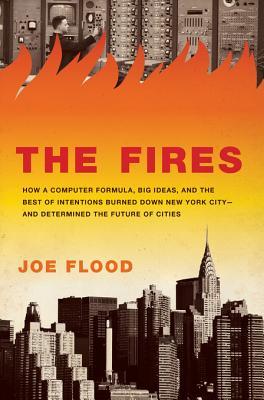
The Fires
How a Computer Formula, Big Ideas, and the Best of Intentions Burned Down New York City--and Determined the Future of Cities
کتاب های مرتبط
- اطلاعات
- نقد و بررسی
- دیدگاه کاربران
نقد و بررسی

February 15, 2010
A Bronx-based journalist examines the epidemic of fires that swept New York City in the 1960s and'70s.
Flood focuses on John O'Hagan, the fire commissioner who presided over the worst of"the Wars," as the era is known in FDNY lore. Ambitious and self-educated, O'Hagan came up from the ranks to become the youngest chief in the department's history. When reformer John Lindsay was elected mayor in 1966, O'Hagan, who strongly believed in the use of statistics and systems analysis to organize the department, became one of his leading allies. The new mayor sought the advice of the RAND Corporation, the legendary think tank that had made its reputation analyzing nuclear warfare for the Air Force. On the surface, it was a perfect alliance. RAND needed new clients, Lindsay needed a blueprint for rational government and O'Hagan needed support for his ideas for making firefighting a scientific discipline. But as Flood shows, the reformers' characteristic weakness was a lack of the local knowledge that had been the bread and butter of the machine politicians they had ousted. The author writes that harried fire captains, given stopwatches to time how long it took their men to reach a fire scene, often lost or broke them, then submitted figures they thought made them look good. RAND whiz kids used simplified formulas to analyze the flawed data they received. O'Hagan, eager to help Lindsay cut the city's bloated budget, used the RAND results to close down firehouses he already"knew" were underperforming—which often turned out to be the ones where union leaders were based. Flood casts a wide net, looking into New York machine politics, the development of systems analysis, the dynamics of urban growth and an array of unexpected byways of NYC history. While his conclusions perhaps go to far in generalizing from the excesses of Lindsay and RAND to condemn liberal reformers as a group, Flood provides a riveting look inside one of the most challenging eras of recent NYC history.
Important reading for anyone who cares about cities and how they are governed.
(COPYRIGHT (2010) KIRKUS REVIEWS/NIELSEN BUSINESS MEDIA, INC. ALL RIGHTS RESERVED.)

























دیدگاه کاربران